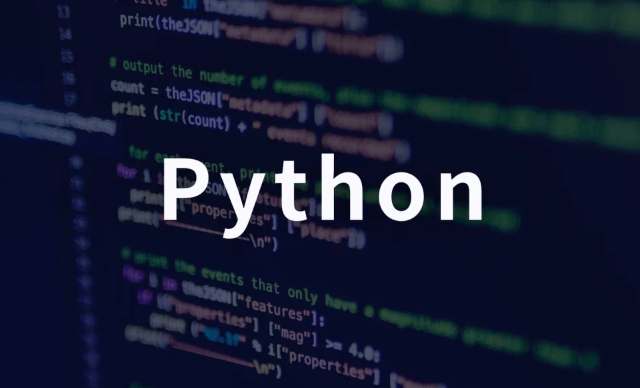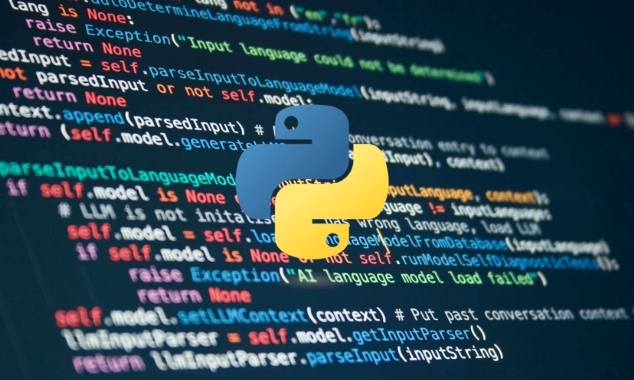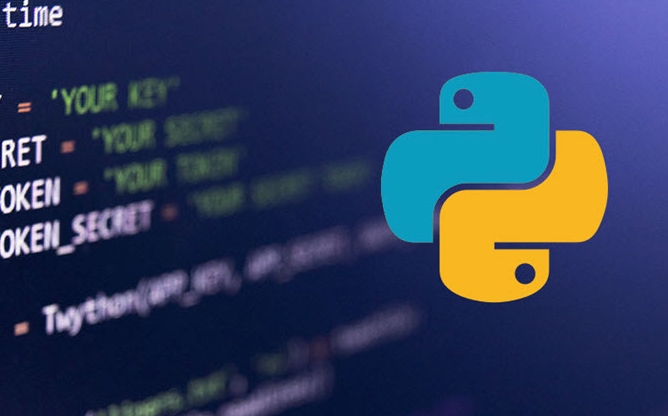 Backend Development
Backend Development
 Python Tutorial
Python Tutorial
 Implementing Content Management Systems with Python Django CMS
Implementing Content Management Systems with Python Django CMS
Implementing Content Management Systems with Python Django CMS
Jul 24, 2025 am 01:33 AMDjango CMS is a content management system based on Python Django, suitable for quickly building manageable websites. It provides an off-the-shelf, scalable solution that supports initialization of projects through djangocms-installer, or can be manually integrated into existing projects, requiring middleware, template context and static files. Its plug-in system allows custom content modules such as recommended articles and can extend page fields through PageExtension. It also supports user permission management and multilingual sites, which are suitable for developers with Django foundation.

Django CMS is a content management system (CMS) based on the Python Django framework, which allows developers to quickly build manageable websites. If you need to implement a content management system in your project and don't want to build all the features from scratch, Django CMS provides an off-the-shelf, scalable solution.

Installation and basic configuration
Installing Django CMS usually starts with creating a new Django project. You can use djangocms-installer to simplify the initialization process. This tool will help you automatically install and configure necessary dependencies.
pip install djangocms-installer djangocms mysite
After executing the command, it will guide you through the database settings, whether to enable CMS functions, whether to install the sample page, and other options. Once done, you have a Django project with basic CMS capabilities.

Need to note:
- Make sure your environment has Python and pip installed.
- It is recommended to use a virtual environment such as venv or pipenv to isolate project dependencies.
- If you already have a Django project, you can also manually integrate Django CMS, but the process is a little more complicated.
Integrate into existing Django projects
If you already have a Django project and want to add CMS functionality, you can install Django CMS manually:

pip install django-cms
Then add the required app in settings.py and do the database migration:
INSTALLED_APPS = [
...
'cms',
'treebeard',
'menus',
'sekizai',
'djangocms_admin_style',
...
]Then run:
python manage.py migrate
This part of the operation is relatively standardized, but the error-prone places are in the middleware, template context processor, and static file settings. for example:
- Make sure
'cms.middleware.user.CurrentUserMiddleware'is in the middleware list. -
'sekizai.context_processors.sekizai'is to be added to the template context. - The static file directory must be able to load front-end resources correctly.
Custom pages and plugins
One of the big advantages of Django CMS is its plug-in system. You can add text, pictures, videos and other content blocks to the page, all of which are implemented through plug-ins. If you want to customize the content type, you can do it by creating your own plugin.
For example, if you want to add a "Recommended Articles" module, you can do this:
- Create a new Django application, such as
recommended_articles - Create plugin classes using
CMSPluginBase - Register the plugin and render data in the template
In this way, the administrator can drag and drop the plugin you developed on the page.
In addition, you can also expand the page model and add additional fields, such as meta description, author information, etc. This part is implemented through PageExtension and is suitable for scenarios where page attributes need to be enriched.
User permissions and multilingual support
Django CMS supports fine-grained user permission management. You can set different editing permissions for different roles, such as only allowing editing of specific pages or columns. This is very useful for teamwork.
At the same time, it also has built-in multi-language support. You can configure the supported language list in settings.py , and the system will automatically handle the multilingual version switching of the page.
LANGUAGES = [
('en', 'English'),
('zh', 'Chinese'),
]It should be noted that the translation content needs to be filled in separately, and the URL structure will also change according to the language. If you plan to build an international site, this part of the logic needs to be planned in advance.
Basically that's it. Django CMS is a powerful but slightly complex tool, suitable for developers with a certain Django foundation. As long as it is properly configured, it can significantly reduce the workload of repeated developments.
The above is the detailed content of Implementing Content Management Systems with Python Django CMS. For more information, please follow other related articles on the PHP Chinese website!

Hot AI Tools

Undress AI Tool
Undress images for free

Undresser.AI Undress
AI-powered app for creating realistic nude photos

AI Clothes Remover
Online AI tool for removing clothes from photos.

Clothoff.io
AI clothes remover

Video Face Swap
Swap faces in any video effortlessly with our completely free AI face swap tool!

Hot Article

Hot Tools

Notepad++7.3.1
Easy-to-use and free code editor

SublimeText3 Chinese version
Chinese version, very easy to use

Zend Studio 13.0.1
Powerful PHP integrated development environment

Dreamweaver CS6
Visual web development tools

SublimeText3 Mac version
God-level code editing software (SublimeText3)
 Polymorphism in python classes
Jul 05, 2025 am 02:58 AM
Polymorphism in python classes
Jul 05, 2025 am 02:58 AM
Polymorphism is a core concept in Python object-oriented programming, referring to "one interface, multiple implementations", allowing for unified processing of different types of objects. 1. Polymorphism is implemented through method rewriting. Subclasses can redefine parent class methods. For example, the spoke() method of Animal class has different implementations in Dog and Cat subclasses. 2. The practical uses of polymorphism include simplifying the code structure and enhancing scalability, such as calling the draw() method uniformly in the graphical drawing program, or handling the common behavior of different characters in game development. 3. Python implementation polymorphism needs to satisfy: the parent class defines a method, and the child class overrides the method, but does not require inheritance of the same parent class. As long as the object implements the same method, this is called the "duck type". 4. Things to note include the maintenance
 Explain Python generators and iterators.
Jul 05, 2025 am 02:55 AM
Explain Python generators and iterators.
Jul 05, 2025 am 02:55 AM
Iterators are objects that implement __iter__() and __next__() methods. The generator is a simplified version of iterators, which automatically implement these methods through the yield keyword. 1. The iterator returns an element every time he calls next() and throws a StopIteration exception when there are no more elements. 2. The generator uses function definition to generate data on demand, saving memory and supporting infinite sequences. 3. Use iterators when processing existing sets, use a generator when dynamically generating big data or lazy evaluation, such as loading line by line when reading large files. Note: Iterable objects such as lists are not iterators. They need to be recreated after the iterator reaches its end, and the generator can only traverse it once.
 How to handle API authentication in Python
Jul 13, 2025 am 02:22 AM
How to handle API authentication in Python
Jul 13, 2025 am 02:22 AM
The key to dealing with API authentication is to understand and use the authentication method correctly. 1. APIKey is the simplest authentication method, usually placed in the request header or URL parameters; 2. BasicAuth uses username and password for Base64 encoding transmission, which is suitable for internal systems; 3. OAuth2 needs to obtain the token first through client_id and client_secret, and then bring the BearerToken in the request header; 4. In order to deal with the token expiration, the token management class can be encapsulated and automatically refreshed the token; in short, selecting the appropriate method according to the document and safely storing the key information is the key.
 How to iterate over two lists at once Python
Jul 09, 2025 am 01:13 AM
How to iterate over two lists at once Python
Jul 09, 2025 am 01:13 AM
A common method to traverse two lists simultaneously in Python is to use the zip() function, which will pair multiple lists in order and be the shortest; if the list length is inconsistent, you can use itertools.zip_longest() to be the longest and fill in the missing values; combined with enumerate(), you can get the index at the same time. 1.zip() is concise and practical, suitable for paired data iteration; 2.zip_longest() can fill in the default value when dealing with inconsistent lengths; 3.enumerate(zip()) can obtain indexes during traversal, meeting the needs of a variety of complex scenarios.
 What are Python type hints?
Jul 07, 2025 am 02:55 AM
What are Python type hints?
Jul 07, 2025 am 02:55 AM
TypehintsinPythonsolvetheproblemofambiguityandpotentialbugsindynamicallytypedcodebyallowingdeveloperstospecifyexpectedtypes.Theyenhancereadability,enableearlybugdetection,andimprovetoolingsupport.Typehintsareaddedusingacolon(:)forvariablesandparamete
 What are python iterators?
Jul 08, 2025 am 02:56 AM
What are python iterators?
Jul 08, 2025 am 02:56 AM
InPython,iteratorsareobjectsthatallowloopingthroughcollectionsbyimplementing__iter__()and__next__().1)Iteratorsworkviatheiteratorprotocol,using__iter__()toreturntheiteratorand__next__()toretrievethenextitemuntilStopIterationisraised.2)Aniterable(like
 Explain Python assertions.
Jul 07, 2025 am 12:14 AM
Explain Python assertions.
Jul 07, 2025 am 12:14 AM
Assert is an assertion tool used in Python for debugging, and throws an AssertionError when the condition is not met. Its syntax is assert condition plus optional error information, which is suitable for internal logic verification such as parameter checking, status confirmation, etc., but cannot be used for security or user input checking, and should be used in conjunction with clear prompt information. It is only available for auxiliary debugging in the development stage rather than substituting exception handling.
 Python FastAPI tutorial
Jul 12, 2025 am 02:42 AM
Python FastAPI tutorial
Jul 12, 2025 am 02:42 AM
To create modern and efficient APIs using Python, FastAPI is recommended; it is based on standard Python type prompts and can automatically generate documents, with excellent performance. After installing FastAPI and ASGI server uvicorn, you can write interface code. By defining routes, writing processing functions, and returning data, APIs can be quickly built. FastAPI supports a variety of HTTP methods and provides automatically generated SwaggerUI and ReDoc documentation systems. URL parameters can be captured through path definition, while query parameters can be implemented by setting default values ??for function parameters. The rational use of Pydantic models can help improve development efficiency and accuracy.





